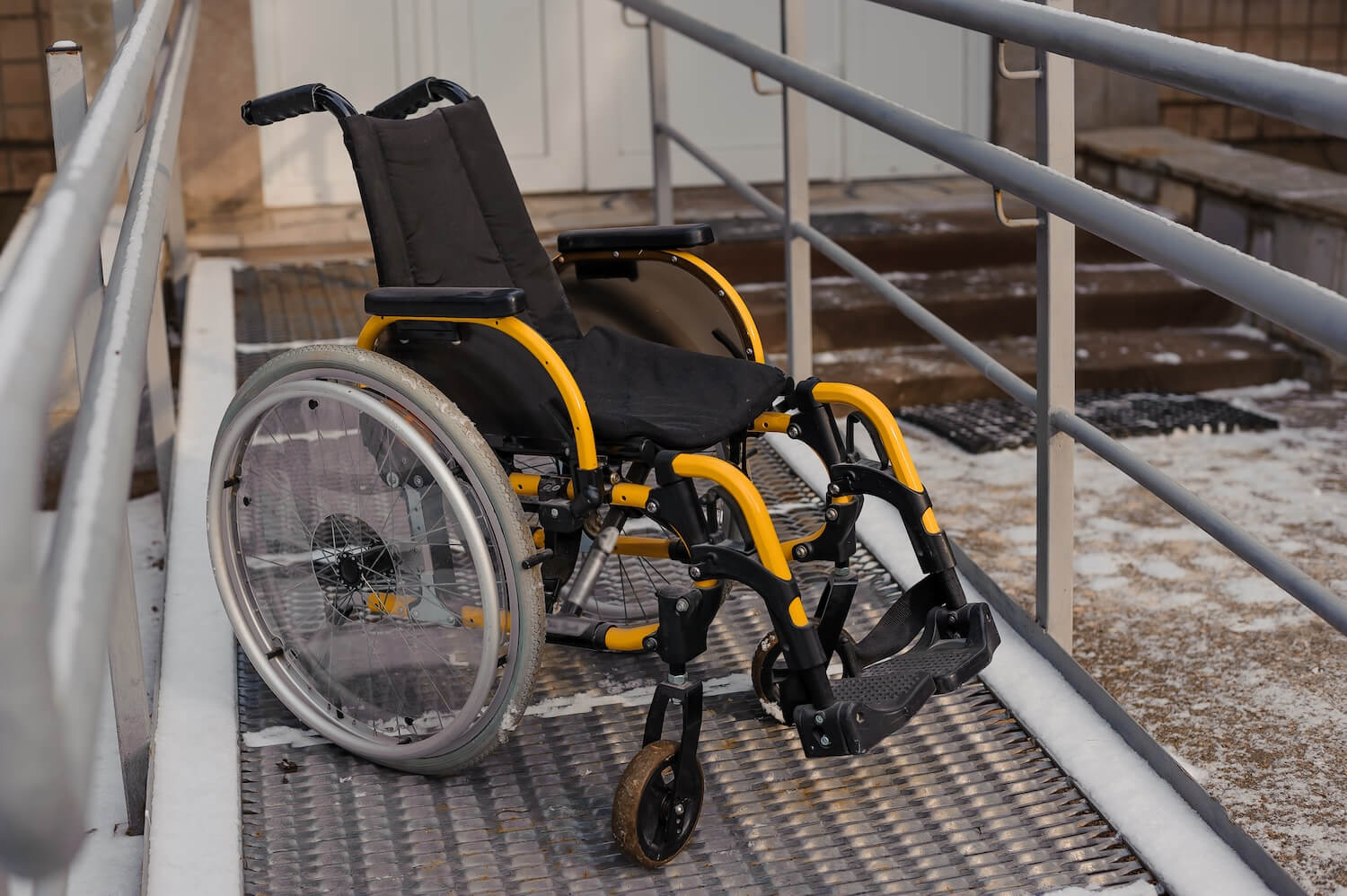When it comes to ensuring accessibility for individuals with mobility challenges, wheelchair ramps play a crucial role in facilitating independence and inclusivity. However, selecting the right wheelchair ramp involves considerations beyond mere accessibility. Factors such as safety, durability, ease of use, and aesthetics are equally important.
In this comprehensive guide, we delve into the key aspects to consider when choosing the right wheelchair ramp, going beyond mere accessibility to ensure an optimal solution for users.
Assessing Needs and Requirements
Before diving into the specifics of wheelchair ramp selection, it’s essential to assess the specific needs and requirements of the user and the environment where the ramp will be installed. Factors to consider include:
- Mobility Device: Determine the type and size of mobility device(s) that will be using the ramp, whether it’s a manual wheelchair, electric scooter, or other assistive devices.
- Weight Capacity: Consider the weight capacity the ramp needs to support, including the weight of the user and the mobility device. This ensures safety and prevents structural damage.
- Space Constraints: Evaluate the available space for ramp installation, including factors such as length, width, and the presence of obstacles like stairs or door thresholds.
- Usage Frequency: Determine how frequently the ramp will be used. Is it for permanent installation or occasional use during events or temporary situations?
- Portability: Assess whether portability is a requirement, especially for ramps that need to be moved or transported frequently.
Types of Wheelchair Ramps
There are various types of wheelchair ramps available, each with its own advantages and suitability for different environments and user needs. Some common types include:
Modular Ramps
These ramps consist of interchangeable ramp sections and platforms, offering flexibility in configuration and installation. They are ideal for both temporary and permanent use, with the ability to be easily adjusted or expanded as needed.
Portable Ramps
As the name suggests, portable ramps are lightweight and easy to transport, making them suitable for temporary use or situations where mobility needs may vary. They often fold for compact storage and can be used both indoors and outdoors.
Permanent Ramps
Typically made of concrete, wood, or aluminum, permanent ramps offer stability and durability for long-term use. They are custom-built to fit specific spaces and can withstand harsh weather conditions.
Telescoping Ramps
These ramps feature adjustable lengths, allowing them to extend or retract to accommodate various height requirements. Telescoping ramps are versatile and suitable for use in different locations.
Track Ramps
Consisting of two separate tracks, these ramps are lightweight and easily portable. They are especially useful for navigating curbs, stairs, and other obstacles encountered outdoors.
Materials and Construction
The choice of materials for wheelchair ramps significantly impacts their durability, maintenance requirements, and overall performance. Common materials include:
- Aluminum: Aluminum ramps are lightweight, durable, and resistant to corrosion, making them ideal for both indoor and outdoor use. They require minimal maintenance and offer excellent traction for safe passage.
- Wood: Wooden ramps provide a natural aesthetic and can be customized to blend seamlessly with existing structures. However, they require regular maintenance to prevent rot, warping, and splintering, especially when exposed to the elements.
- Concrete: Concrete ramps offer unmatched durability and stability, making them ideal for permanent installations. They can withstand heavy use and harsh weather conditions but require professional installation and may have a longer construction timeline.
- Composite Materials: Some ramps combine multiple materials, such as aluminum with non-slip surfaces or recycled materials, to achieve optimal performance and durability.
Ramp Safety Features
Ensuring the safety of wheelchair users and caregivers is paramount when selecting a ramp. Key safety features to look for include:
Non-Slip Surface: The ramp should have a textured surface or non-slip material to provide traction, especially in wet or slippery conditions.
Edge Guards: Edge guards prevent wheelchair wheels from slipping off the sides of the ramp, reducing the risk of accidents.
Handrails: Handrails provide additional support and stability for users, especially on ramps with steeper inclines or longer lengths.
Weight Capacity: The ramp should have a weight capacity that exceeds the combined weight of the user and mobility device to ensure safe usage.
ADA Compliance: If the ramp is intended for public or commercial use, ensure that it meets the accessibility guidelines outlined by the Americans with Disabilities Act (ADA) to guarantee compliance with safety standards.
Visibility: Proper lighting and contrasting colors can enhance visibility and help users navigate the ramp more safely, especially in low-light conditions.
Ramp Installation and Maintenance
Proper installation and regular maintenance are essential for the longevity and performance of wheelchair ramps. Consider the following:
Professional Installation
Depending on the complexity of the ramp and local building codes, professional installation may be required to ensure structural integrity and compliance with safety regulations.
Regular Inspections
Routinely inspect the ramp for signs of wear and damage, such as loose bolts, cracks, or corrosion. Address any issues promptly to prevent accidents or injuries.
Cleaning and Upkeep
Keep the ramp clean and free of debris to maintain traction and prevent slip hazards. Depending on the material, periodic cleaning with soap and water or specialized cleaners may be necessary.
Winter Maintenance
In colder climates, take precautions to prevent ice and snow buildup on the ramp, such as using ice melt products or installing heating elements for continuous snow removal.
Cost Considerations
The cost of wheelchair ramps can vary widely depending on factors such as material, size, customization, and additional features. While budget constraints are important to consider, prioritize safety, durability, and suitability for the user’s needs over upfront cost alone. Additionally, explore potential funding sources or assistance programs that may help offset the expense of ramp installation, such as government grants, nonprofit organizations, or insurance coverage.
Ramp Customization Options
Depending on the specific requirements of the user and the environment, wheelchair ramps can be customized to enhance functionality and aesthetics. Some customization options to consider include:
Ramp Width and Length
Ensure that the ramp’s dimensions accommodate the width of the wheelchair or mobility device and provide sufficient length to achieve a safe slope ratio. Custom lengths may be necessary to fit unique space constraints.
Angle of Incline
The slope of the ramp plays a critical role in accessibility and user safety. Customizing the angle of incline ensures compliance with accessibility standards while optimizing ease of use for the user.
Color and Finish
Choose colors and finishes that complement the surrounding architecture and improve visibility for users with visual impairments. Non-reflective surfaces minimize glare and enhance contrast for better navigation.
Ramp Accessories
Consider additional accessories such as transition plates, landing pads, or ramp extensions to improve functionality and address specific needs, such as bridging gaps or navigating uneven terrain.
Removable Handrails
For ramps used in temporary or changing environments, removable handrails offer flexibility and ease of storage while providing optional support for users as needed.
Environmental Considerations
Environmental factors can impact the performance and longevity of wheelchair ramps, especially those installed outdoors. Consider the following environmental considerations:
- Weather Resistance: Choose materials that withstand exposure to sun, rain, snow, and temperature fluctuations without deteriorating or compromising safety. Aluminum, fiberglass, and composite materials are often preferred for their durability and weather resistance.
- UV Protection: UV-resistant finishes and coatings help prevent fading, warping, or degradation of ramp surfaces exposed to direct sunlight, ensuring long-term aesthetic appeal and performance.
- Drainage: Proper drainage is essential to prevent water accumulation on the ramp surface, especially during rainy or snowy weather. Ensure that the ramp is sloped correctly to facilitate water runoff and consider installing drainage channels or grates as needed.
- Maintenance Accessibility: Accessibility for maintenance and cleaning is crucial for preserving the integrity of the ramp over time. Ensure that access points are easily reachable and that any mechanical components are readily accessible for inspection and repairs.
- Local Regulations: Familiarize yourself with local building codes and regulations governing the installation of wheelchair ramps, especially in public or commercial settings. Compliance with these regulations ensures safety and legal compliance.
Consultation with Accessibility Experts
When in doubt or faced with unique challenges, consulting with accessibility experts, such as occupational therapists, disability advocates, or certified accessibility consultants, can provide invaluable guidance and expertise. These professionals can offer personalized recommendations based on the user’s specific needs and environmental considerations, helping to ensure that the chosen ramp solution meets or exceeds accessibility standards and best practices.
Conclusion
Selecting the right wheelchair ramp goes beyond mere accessibility, encompassing a range of factors including safety, durability, customization, and environmental considerations. By assessing the user’s needs, prioritizing safety features, exploring customization options, and considering long-term implications, you can choose a ramp solution that enhances independence, inclusivity, and dignity for individuals with mobility challenges. Remember, accessibility is not just about physical access; it’s about creating environments that welcome and empower all individuals, regardless of their abilities or limitations. By investing in the right wheelchair ramp, you’re not just building a pathway; you’re building a more inclusive and equitable society for everyone.


